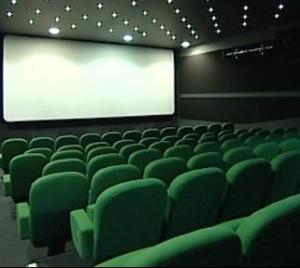As mentioned in our last blog posting, I had the pleasure of co-authoring the recent book The Gamification of Learning and Instruction Fieldbook, contributing several chapters on simulation. I’ve been working with simulations and experiential learning for almost my entire career, over 25 years. I became involved with simulation because, like a lot of people in the learning & development field, I was frustrated. I looked at a lot of the learning initiatives that organizations did and I wondered: Is any of this really making a difference? We’re making people smarter, but are we really changing the way they behave? Is there any real impact on the business?
I became fascinated with simulation because simulation had the potential to not just change what people knew, but to change what they actually did. Simulation immerses people in a realistic environment and causes them to react emotionally and instinctually, much as they do in the real world. And it contextualizes what they’ve learned; rather than being an abstract idea that they have to parrot back, it becomes a real-life behavior that they have to execute.
The earliest simulations I built were very inspired by old text-adventure games like Zork. In the early days of computers, Zork created an immersive environment using only words. But more than that, it required analysis, problem-solving, and creativity—the same skills we want to achieve through training interactions. And nobody forced you to play Zork; you did it because it was challenging and fun. What if training was challenging and fun? By the way, for a retro thrill, you can still play Zork online.
Today’s technology provides more opportunities for immersion, with video, animation, mobile apps, and 3D virtual worlds. But the core of simulation is the same, whether it’s a high-end video simulation or a pencil-and-paper exercise. You need a realistic environment, a real-life goal, an immersive story, and characters you can relate to.
 If you’d like to know more about how you accomplish all that, please join me in San Diego, CA on February 3, 2014 for the Training 2014 Conference & Expo where I’ll be presenting a session called The Secrets of Simulation Design. We’ll talk about why simulation is so effective, the different types of simulation, and some basic design concepts. We’ll also look at some examples of effective simulations.
If you’d like to know more about how you accomplish all that, please join me in San Diego, CA on February 3, 2014 for the Training 2014 Conference & Expo where I’ll be presenting a session called The Secrets of Simulation Design. We’ll talk about why simulation is so effective, the different types of simulation, and some basic design concepts. We’ll also look at some examples of effective simulations.
For a deeper dive on simulation, read PDG’s White Paper on Simulation and Experiential Learning, read case studies on using simulation for leadership development in a retail environment, Pharmaceutical sales leadership, or stop by and chat at Training 2014!

Rich Mesch is Senior Director, Customer Engagement at Performance Development Group

 Zork, which created a very compelling and immersive world using only text. I remember thinking, if we can become so involved in fictional worlds like this, what would happen if we became immersed in real-life scenarios the same way? It would be a lot like doing it for real, except we'd be in a nice safe environment where we could try new behaviors and there would be little penalty for failing.
Zork, which created a very compelling and immersive world using only text. I remember thinking, if we can become so involved in fictional worlds like this, what would happen if we became immersed in real-life scenarios the same way? It would be a lot like doing it for real, except we'd be in a nice safe environment where we could try new behaviors and there would be little penalty for failing.
 Is there such a thing as too much reality?
Is there such a thing as too much reality? quently build interest by inserting compelling story twists. I won’t include any spoilers, but most people will admit to being thrown for a loop when they learned the truth about Bruce Willis’ character in
quently build interest by inserting compelling story twists. I won’t include any spoilers, but most people will admit to being thrown for a loop when they learned the truth about Bruce Willis’ character in  story takes a twist when it unexpectedly starts raining frogs. And perhaps that’s the key difference between movie storytelling and learning storytelling. If your story completely deviates from reality, you’ll probably lose your audience. So your story probably shouldn’t have any froggy precipitation.
story takes a twist when it unexpectedly starts raining frogs. And perhaps that’s the key difference between movie storytelling and learning storytelling. If your story completely deviates from reality, you’ll probably lose your audience. So your story probably shouldn’t have any froggy precipitation.


